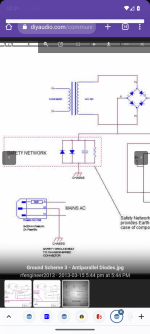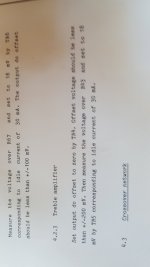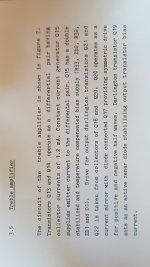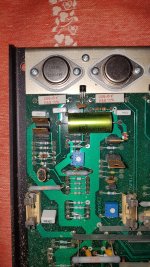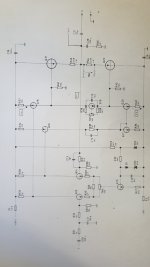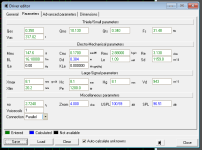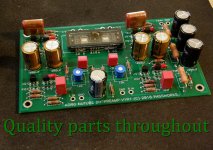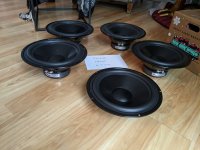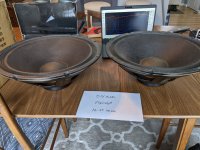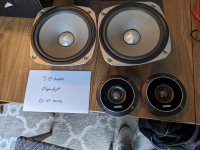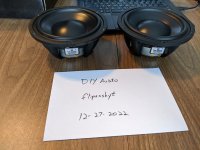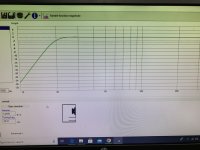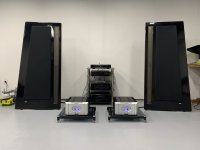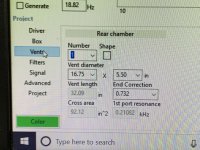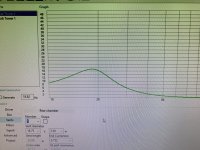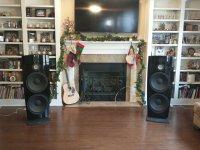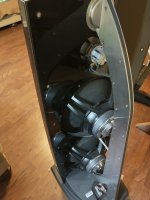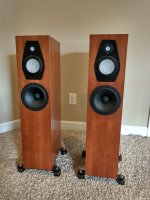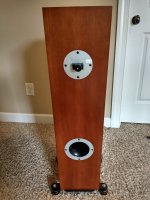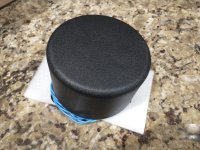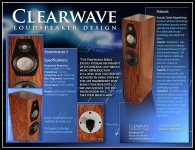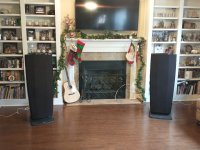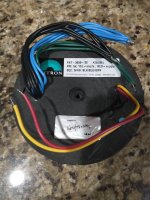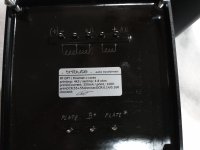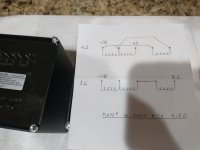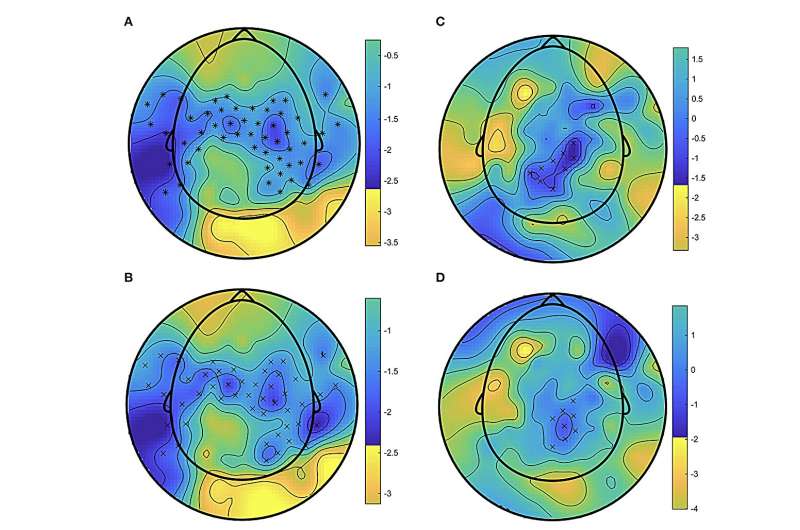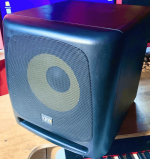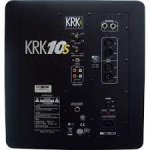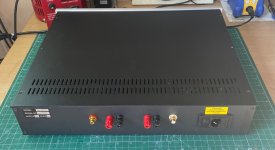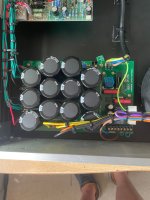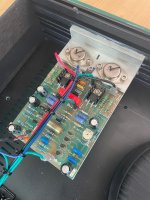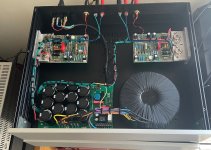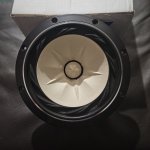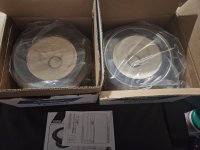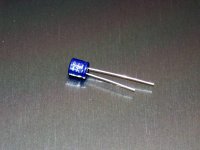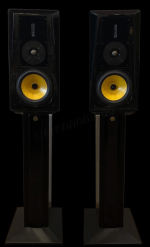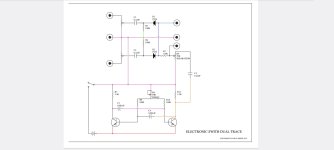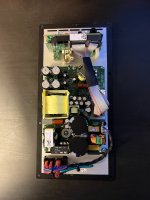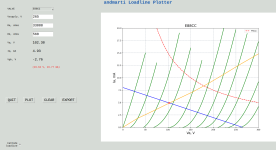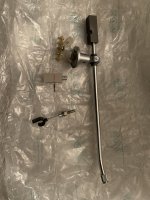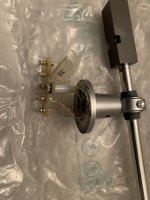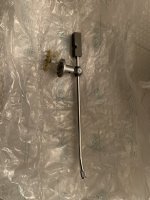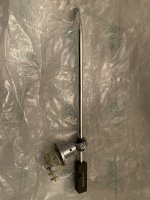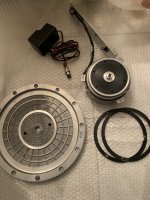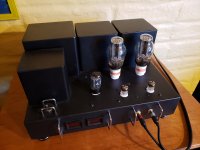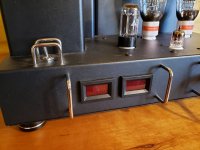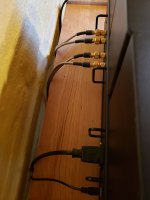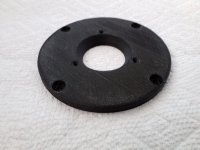Hi,
here some data to show magnitude of effects room has on bass response, and how much bass box alignment matters in comparison.
Short story: I've had some 15" woofers for many years and have been prototyping a speaker system with three way mains speaker equal amount of time. Currently on third bass box version for the mains, and I've been downsizing every time as I've always had to EQ the lows lows down to match up sensitivity of rest of the system. Also, I've felt there is coloration of sound from the bass box, which ought to reduce by better construct, smaller panels, modes inside higher up in frequency, minding about the port and so on. In general, as box gets smaller any issues get higher up in frequency, hopefully beyond pass band and out of harms way and should reduce any "box sound".
But that would compromise the bass, right, making box smaller than a simulator suggests? True if only looking anechoic response on the screen and forgetting the box will be in a room along with rest of the stereo playback system. And in this case, a 15" bass provides plenty enough for my home use, so there is extra SPL potential that can be sacrificed. Your system and context might differ, so please post if you have an example, perhaps even a counter example.
Anyway, my first box is already scrapped so approximating a bit. I remembered it was 150l but it was likely smaller as simulator suggests 113l for the driver automatically. Lets assume it was 113litre and try to remember the tuning. Second box was and still exists about 80l. Third box is sealed and only about 50l. Here are box simulator responses for the three, all using the same woofer:
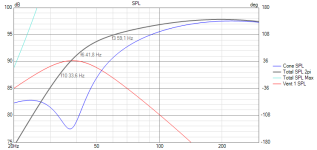
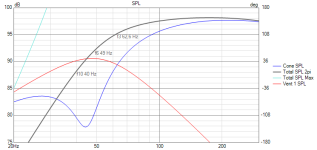
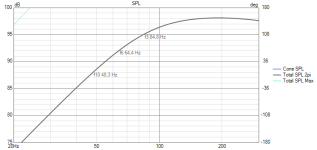
Dramatic difference, right, the 50litre box response drops much higher than the other two and should have underwhelming bass. Also the 80litre box should shame on the 113litre, which should have much "better" bass, right, that's what the simulator automatically suggests at least.
Let's find out, here is measurement of one of the boxes. This is box that does sub woofer duty right now, and one of the three above. Mic was at listening spot, ungated sine sweep. Can you guess which one of the three is it? You can guess it reasoning with the text above, but the important bit is can you read the box alignment from this graph? The reflex boxes are tuned around 40Hz but here is crazy dip around 40Hz.
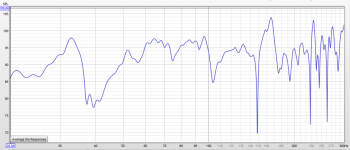
No, I cannot read the aligment. It's the 80l reflex box.
Here is the box simulator SPL graphs from all three above overlaid on the actual measurement, see correlation now? I cannot still
😀
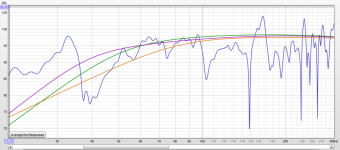
The green line is the corresponding simulation. Huge 14db peak above simulated SPL at 33Hz and 11db dip at 39Hz with the room and positioning I happened to have this time. I'd say the response would be pretty much the same regardless which one of the tree enclosures it was, a 113litre reflex box or 50litre closed box. They would have some differences, but none would measure like the simulation.
ps. the measurement voltage was not calibrated so the amplitudes are matched roughly by eye.
Alright, here is the 50l closed boxes, main speakers Left and Right and both overlaid. The boxes are at different location in room being Left and Right main speakers, while the mic stays put.
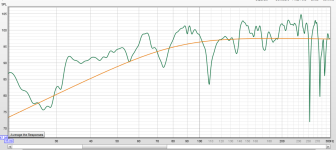
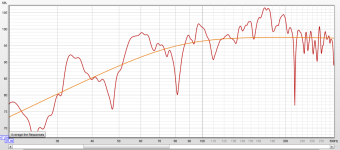
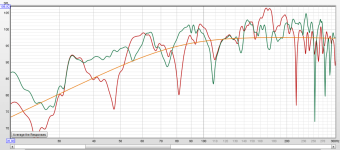
On these graphs the measured responses show trend of the simulated response quite nicely, varying roughly +/-10db due to influence of the room. I have to use EQ to make sound better like with all of the boxes. These small boxes sound lean without EQ and the bigger reflex boxes sound boomy without EQ, and with all of them it's very hard to get system bass nice sounding, which I attribute to peaks and dips in the response but of course could be anything as I'm a hobbyist.
Anyway, to get some feel on magnitude of things: If the room influence was translated into amplifier power it would mean that if I fed 10W to the speaker, the dips would be equivalent of feeding 1W power (10db less) and peaks 100W (10db more), total effect of room is 100x amplifier power! Looking at the combined graph, around 47Hz the left channel has 16db more output than the right, that is 40x difference in amplifier power between Left and Right channels, due to room.
So, manipulating positioning of things is very important, while box alignment is less important, almost meaningless in comparison at least in this particular example.
Lesson in my particular case presented here: as the room already ruins the bass response and manipulating it to liking would require separate bass system and EQ, or at least EQ, I could further ruin the bass without any extra harm by sacrificing some of the extra bass output that box simulators originally suggested, just tweak the EQ. This allowed to make smaller box that's both easier and cheaper to build, easier to accommodate and position in room, has less audible issues on midrange and bass performance is pretty much still the same as before, dominated by the room! I had to use EQ on all of the boxes to make system response balanced.
Based on this experience I don't mind main speaker bass alignment too much currently, other than better make it so that midrange works as well as possible, basically to optimize everything else than the bass. I feel main speaker bass box alignment has very little to do with perceived bass quality, instead one should consider utilizing separate bass system that is specifically adjusted with the room to get the response you want with SPL capability you want, by what ever means suit you like using some gradient bass system, positioning, EQ, multisub, tearing down the room, what ever.
Many of you already know all this, but many of you don't, like I didn't when starting off spending hours in front of WinISD looking at wrong things. It was interesting to see the graphs today, so though to share. Have fun!
🙂